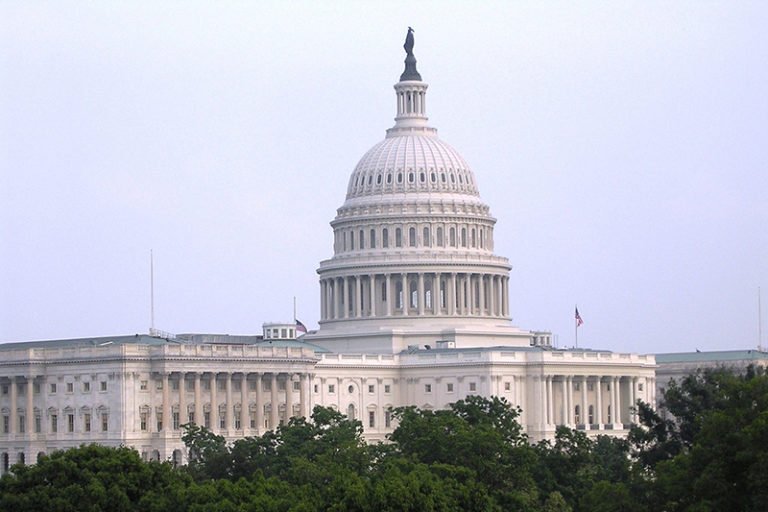After the riots at the US Capitol Building in Washington DC shook the world on 6th January, questions were inevitably raised over whether the security arrangements in place were sufficient. Kobi Mor, a Security Management Strategist & Thought Leader, explains how he would go about a security enquiry into the events that took place.
 Much criticism has been expressed about the security arrangements around the Capitol Hill in the days that have passed since the attack. We all believe that the writing was on the wall for everybody to see, including those in charge of security at the Hill. We all feel that there was a certain level of complacency.
Much criticism has been expressed about the security arrangements around the Capitol Hill in the days that have passed since the attack. We all believe that the writing was on the wall for everybody to see, including those in charge of security at the Hill. We all feel that there was a certain level of complacency.
I believe that many of the critics are like me: we were not at the scene, nor have we been any part of the advance arrangements in the period that led to the attack. Most of us learned the details from the media – social and traditional – some of us living in different cultures thousands of kilometres away.
In lieu of this, instead of providing clear-cut critical statements, I’ll try to list some topics that I would explore, if I were to run an enquiry (the choice of enquiry over inquiry is deliberate) into the events that unfolded. While the critical tone will resonate, I’ll attempt to look at it from a processes angle.
Reading the room
The statement of Mission of the Capitol Hill Police is very straightforward: “Protect the Congress – its Members, employees, visitors, and facilities – so it can fulfill its constitutional and legislative responsibilities in a safe, secure and open environment.”
However, there are more functions involved: Sergeant-At-Arms of the Senate, Sergeant-At-Arms of the House of Representatives, DC Metropolitan Police and maybe more – a quick search reveals that the Chief of Capitol Police and the two Sergeants-At-Arms were replaced by interim appointments during the 72 hours following the attack.
For sure the security setup around the Capitol Hill and the units that form it are experienced in dealing with protests; The Mall sees hundreds of them every year. However every day, every shift, is a new security operation that needs a fresh and concrete situation assessment. Not necessarily intelligence based – in many cases the writing is on the wall.
The rhetoric of the US political leadership in the last couple of years became aggressive and it went even more belligerent with Trump’s relentless efforts to reverse the results of the 2020 election. It culminated with Trump addressing the protesters on the morning of January 6th.
Security leaders do not always need Intelligence. They need not be political, they just need to read the writing on the wall, consume news media and know where they live. As a security leader you should always assume that it may go further than what the ordinary public believe, especially when all the signs are demonstrable.
I would look into the routines of situation assessment: did they run periodical situation assessment meetings with all relevant stakeholders? On a quarterly\weekly basis? Every evening for the following day?
The ratification of the count of electors is one of the highlights of the transition of power. Though not necessarily a significant event to the wider public in past transitions, clearly this time was different, given the current political atmosphere. Was this an item in the ongoing situation assessment sessions? And a more critical question, if such an item was there, why did it not manifest in a change of security setup for that particular day? I would look to see if threat scenarios were developed, table-top wargame drills exercised, etc.
Such routine assessments should have resulted in better crowd control measures such as barricades, bolstered perimeter security and access control, and crowd dispersal means such as water cannons. US law enforcement agencies have a lot of experience with these tools and methods.
The main question remains – what is the triggering process to deploy them?
Were the security processes in place sufficient?
If all else failed and the situation was not declared an emergency, I’d expect law enforcement officers at the outer security layers on January 6th to identify many protesters that showed up with personal armor, to include ballistic vests and helmets, even before the mob stormed the Hill. Same writing, same wall – they came battle ready.
Apparently, mobilising of support and augmentation of forces from neighboring jurisdictions only started after the Capitol had already been stormed, all the security layers were breached, and people had got killed. I believe that if ongoing situation assessment sessions were in a timely manner, extension of neighboring forces would already have been waiting in nearby staging grounds, ready to deploy immediately.
Instead, supporting forces started to pour into the Mall hours after the attack took place.
On a related note, I noticed officers were forming rows, preparing for physically tackling and pushing the protestors further from the Hill. I saw officers standing shoulder to shoulder with black helmets, yellow helmets and, surprisingly enough, some with bicycling helmets on the same row!
This brings me to the question of unity of command and of accountability. One of the remarkable features of US government culture is its multitude of governing bodies, designed to check and balance each other. It has its origins in the American historical culture of restraining government powers. It does, by design, tend to moderate extreme action and to hold back and delay response. In security preparedness in civil environments, where quick response is critical, it is a significant hindrance.
I would investigate the question of who is considered accountable for the mission statement as defined. My expectation here would be obvious – there should be unity of command and a clear definition of accountability. This should have led to mutual training with any potential supporting forces at leadership, unit and individual officer levels.
The violence on January 6th was of little surprise to me. Given the language used by political leaders, the question was not whether violence would emerge, but rather when and where. Looking back at the US presidential transition timeline, it was very easy to identify the hotspots:
- in terms of time, the ratification session on January 6th
- in terms of location, the Capitol Hill
The writing was all over the wall and it was not difficult to assess and imagine the potential threat scenarios. The relatively common excuse of ‘we received no advance intelligence’ does not hold ground here.
There are several factors that will need to be addressed – was an officer justified to open fire? Why was there a lack of physical security protection from crowd control barriers? Why was there not effective access control protection? I choose to ask the process related questions, however.
While these process questions may be rather basic and straightforward, they are intertwined with each other. I can’t provide the answers, but I am very curious about them and I have a hunch that the answers would be revealing.
About the author
Kobi Mor is a Security Management Strategist & thought leader, coach and a mentor. He has 38 years’ of experience in security leadership in civil and business environments, including 22 years in Homeland Security.

